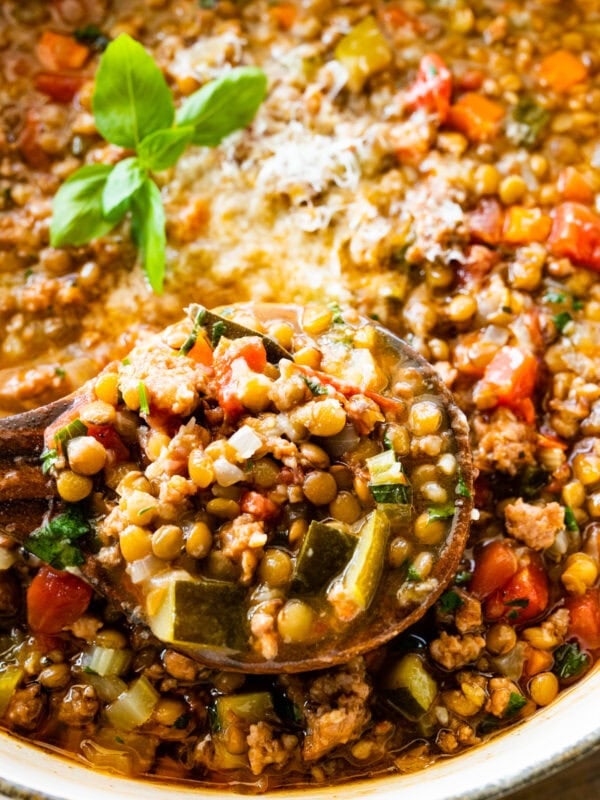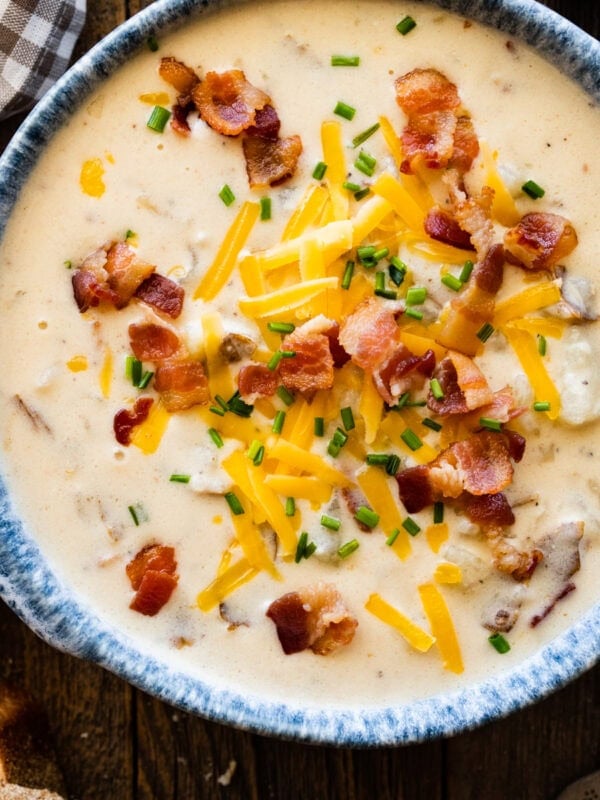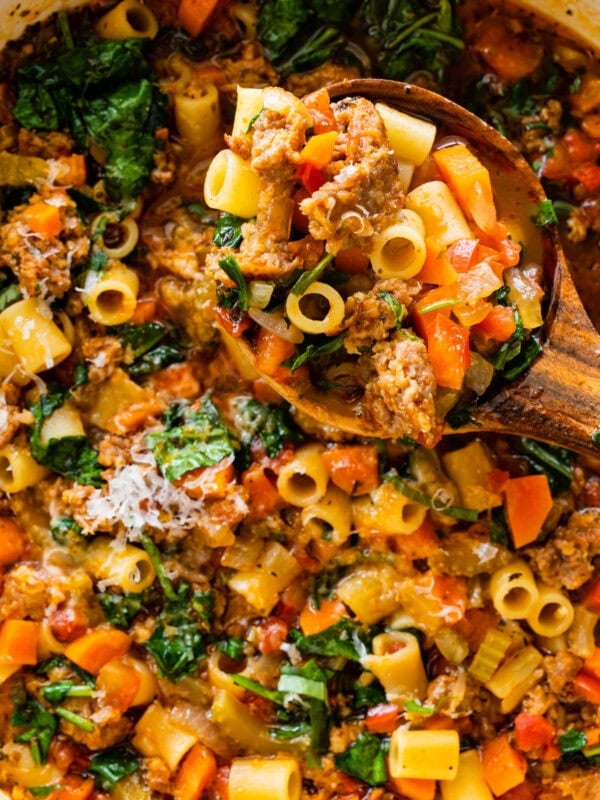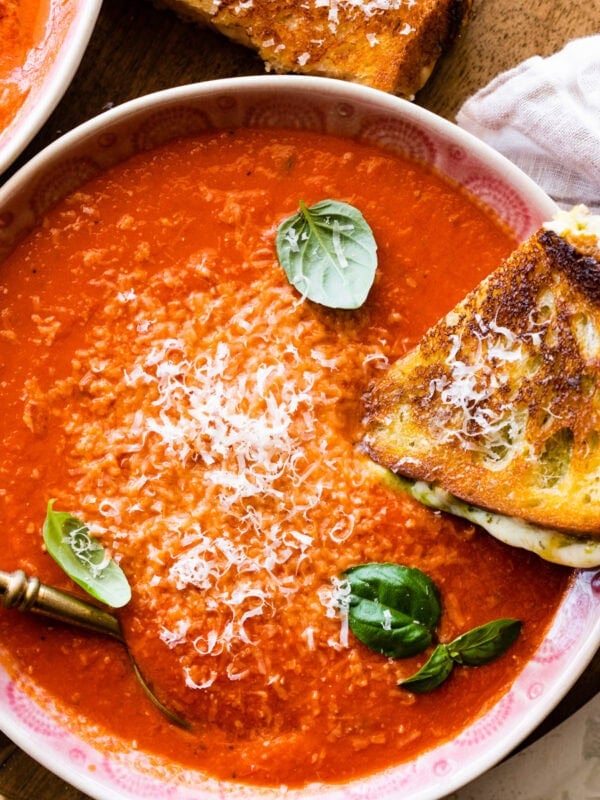This post may contain affiliate links. Please read our disclosure policy.
Burrata vs. Mozzarella– they are both just cheese- right? While mozzarella has a history that is centuries long, burrata is newer on the scene and has been gaining popularity not only in Italy but in the rest of the world.
So, what’s the difference between the two? Which is better? While the latter is more a question of personal preference, the differences are easier to quantify. This complete guide explains everything you want to know about the difference of mozzarella and burrata.

Any Italian will tell you that fresh cheese is not just a food but a work of art and a labor of love. My family gets fresh mozzarella and burrata from a cheese farm in Kia, Sardegna. I love visiting and seeing how the cheese is made. Overseeing the workers pulling and stretching the mozzarella by hand is mesmerizing!
Table of Contents
What Is The Difference Between Mozzarella And Burrata?
Both fresh mozzarella and burrata cheese are semi-soft, white cheeses made most commonly from cow or buffalo milk, but the main difference lies in the texture.

Biggest difference between Mozzarella and Burrata is Texture
The biggest contrast between the two comes, quite literally, comes from within. While mozzarella is more solid, burrata is a casing of mozzarella filled with soft, creamy stracciatella. Stracciatella is the stretched curd mixed with fresh cream.
In that same cheese shop in Kia, we sometimes skip the burrata and ask for a container of the stracciatella – it’s the best part!
Let’s see how each mozzarella and burrata are made to further compare the two.
WHAT IS MOZZARELLA, AND HOW IS IT MADE?
Fresh mozzarella cheese is a rich, springy cheese traditionally made from the fatty milk of the Mediterranean buffalo (mozzarella di buffalo). As demand for cheese rose, mozzarella became more often made with cow’s milk. Pasta filata, or the process of making mozzarella, has been around for hundreds of years in Italy.
First, rennet is added to the pasteurized or raw milk and is left to coagulate into a paste. Then, the curd is cut, and the whey is drained off during a resting period. Resting the curd allows a rich, flavorful texture to develop. Next is the filatura, when the curds are steeped in either hot water or whey.

After the curds begin to float, they are removed and kneaded or pulled until the signature elastic texture is accomplished. And presto, you have fresh Italian cheese! Ideally, the mozzarella is eaten within a few days of being made but can be stored in a brine for about 5 days in the refrigerator.
ORIGINS OF MOZZARELLA
Legend has it that mozzarella was first (accidentally) made when some cheese curds fell into a bucket of hot water back in the 1st century AD. Around the 12th century, we have a written record of priests at the Monastery of St. Lorenzo offering travelers slices of ciabatta bread with a cheese they called “mozza”. A recipe by Papal Cook, Bartolomeo Scappi, calls for “milk cream, fresh butter, ricotta cheese, fresh mozzarella and milk” using the word mozzarella as we know it now for the first time in written history in 1570.
During that time, cheese was made primarily from sheep’s milk. As the years went by and the farming of the Mediterranean buffalo gained prominence, mozzarella followed suit. Mozzarella di bufala (buffalo mozzarella) was born.
Mozzarella has been popular in southern Italy for hundreds of years but didn’t travel much farther until the 20th century when refrigeration became more standard in homes and shops worldwide.

TYPES OF MOZZARELLA
This queen of Italian cheeses comes in at least a dozen varieties with unique properties. You may not be able to find all of them in your local grocery store, but they are becoming more easily available in specialty cheese stores or Italian markets.
Ovolini is a slightly smaller version of mozzarella named for its size, meaning “little egg”. These balls are perfectly sized for slicing and serving prosciutto or drizzled with olive oil, fresh tomatoes, and balsamic vinegar in Caprese salad.

Bocconcini means “bite size” and this type of mozzarella is exactly that. Usually found in a one-ounce portion, these tiny mouthfuls are perfect for pasta salads or drizzled with a little olive oil.
Ciliegine is another variation of mozzarella that gets its size-descriptive name from the Italian word for “cherry”. This type of cheese is perfect for adding to antipasto skewers with tomato and basil leaves or in delicious bruschetta on crispy bread!
Perline, taking its name from the Italian word for “pearl”, is the smallest variety of mozzarella. These little cheesy goodness are a great size for stuffing into peppers and adding to any pasta dish you enjoy!
Fior di Latte, meaning “flower of the milk”- a specialty mozzarella made from cow’s milk. This delicious cheese has a milder flavor than mozzarella di bufala but boasts a more elastic texture. This versatile cheese works well in Italian cuisine, including pasta, pizza, and even dessert!
Mozzarella di Bufala (also called mozzarella di bufala Campana if produced in the Campania region of Italy) is cheese made only from the milk of the Mediterranean water buffalo. It offers a sweeter, tangier flavor than the fior di latte. In 1993 this cheese was granted the status of “denominazione di origine controllata” (DOC – “controlled designation of origin”). This stamp designates products produced and developed in a specific geographical area.
Pecorella is a similar cheese produced in the same way as other mozzarella but made from sheep’s milk instead of cow or buffalo. This type is more commonly found in Sardinia and Lazio, where more animals are farmed. It is yellowish and has a strong taste.
Scamorza– mozzarella made with smaller curds that retain less moisture, and the finished product is hung for an aging period of 2 weeks. It has a distinct pear shape, a dryer, more chewy texture, and a more pungent, sharp flavor.
Treccia – mozzarella pulled into long strips and braided when warm, while Nodini is characterized by its knot shape and chewy texture.
Try this recipe Easy Fried Cheese Balls Recipe (Crispy Bites).
WHAT IS BURRATA, AND HOW IS IT MADE?
Burrata cheese is the decadent, creamy cousin of mozzarella. It has a thin outer shell made of mozzarella that envelops the rich, velvety stracciatella center.

Burrata is hand-made similarly to mozzarella; milk (buffalo or cow) is curdled with rennet, and the curds are dropped into hot water or whey, then left to turn into a thick paste. The paste is pulled and kneaded into the desired pliable texture, formed into a pouch, and filled with stracciatella. Stracciatella is made by soaking thin strips of mozzarella curd in sweet cream.
As with mozzarella, burrata is made from water buffalo or cow’s milk. However, with the demand for burrata growing worldwide, the cow’s milk version is more easily accessible in most markets outside of Italy.
ORIGINS OF BURRATA
Italians have enjoyed mozzarella cheese for centuries, but burrata is much newer. Though it’s difficult to know the exact origins of this regional delicacy, the credit is given to Lorenzo Bianchino Chieppa, a cheesemaker in Andria. In an interview by historian Riccardo Campanile, Chieppa’s son says the invention was born of a need to use leftover cheese-making products.
However, there is no written record or copyright attached to this process. Other cheese makers and families in the area claim that they were the ones who invented this sought-after cheese.

Differences
Mozzarella and Burrata are similar in many ways. However, there are of course, differences in taste and texture. Mozzarella has a milder, more delicate, milky flavor, while burrata has a richer, stronger taste due mainly to the sweet cream of the stracciatella.
The main distinction between these two cheeses lies in the texture. Mozzarella comes in many shapes and sizes, but overall is much denser and more solid. It has a pliable, elastic nature and can even be shredded using a drier, low fat, or smoked form. Burrata’s uniqueness comes mainly from its creamy center that oozes the luxurious stracciatella when the outer casing is sliced open.
Yet another dissimilarity between these two cheeses is the fat content. While both are generally considered high in fat and calories, burrata takes the cake again thanks to its gooey stracciatella center.
Mozzarella has about 6 grams of fat per ounce, while burrata has about 9. Though it’s not a huge discrepancy in fat content, the difference is quite apparent when you feel the velvety stracciatella practically melt in your mouth!
What Cheese Is Better?
This question is more up to personal preference, and in many ways, these two cheeses are interchangeable depending on your texture (or price!) preference. For example, if you wanted to make pizza, I would choose mozzarella because the signature creamy center of burrata would be lost after cooking.
You can put burrata on top of a pizza after it’s cooked to enjoy the creamy insides in contrast with crisp dough and acidic tomato sauce. It’s also popular to serve pasta dishes with a ball of burrata on top, letting the stracciatella flow out onto the food after it’s pierced.

ITALIAN RECIPES
Now that you’re well-versed in the world of mozzarella and burrata, I’ve included some of my favorite Italian dishes that feature these cheeses for you to try at home!
- Fast Italian No Knead Ciabatta Bread
- Bruschetta with Mozzarella, Tomato, and Basil
- Authentic Neapolitan Pizza Dough
- Pear Honey Walnut and Cheese Pizza
- Easy Creamy Polenta
- Best Baked Artichoke Spinach Dip
- Italian Tortellini Pasta Salad
- Cheese and Broccoli Pasta Bake with White Sauce
- Eggplant and Tomato Pasta
- Pasta with Salsa Fresca (fresh tomato sauce)
- Sweet Focaccia with Raspberries and Balsamic Glaze
FAQs Mozzarella vs. Burrata
Mozzarella is a semi-soft cheese made from cow or water buffalo milk. Burrata is mozzarella that has been made into a dumpling shape and filled with stracciatella (stringy cheese curd soaked in cream).
Mozzarella has a lighter taste, while burrata is higher in fat with a richer buttery taste.
Burrata can be used much like mozzarella but has a difference in texture that is lost when cooked.
No. Burrata has an outer mozzarella casing filled with cheese curd soaked in cream. Ricotta is slightly sweet and made with leftover whey from the cheesemaking process.
They are close in both fat and calorie content, but burrata is higher in both. Burrata has about 9 grams of fat and is 90 calories per ounce, while mozzarella has about 6 grams of fat and 85 calories per ounce.
Yes, it melts well but loses its signature texture when melted in the oven. Burrata is best enjoyed at room temperature (remove from the fridge about 30 minutes before serving), so the stracciatella oozes out when cut.
Storing burrata in water helps to maintain its soft, moist texture and keeps it from drying out. If you have opened but unused burrata, store it in an airtight container covered with water.
You can freeze mozzarella that’s shredded or in block form though it can become crumbly when thawed. Frozen fresh mozzarella or burrata is not recommended as the high moisture content forms ice crystals and is mushy upon thawing.
Mozzarella is less expensive than burrata. Burrata is one of the most expensive cheeses on the market, often sells out quickly, and is harder to find outside of specialty shops.
Related
Looking for other recipes like this? Try these:
Pairing
These are my favorite dishes to serve with [this recipe]:
💙 MADE THIS RECIPE AND LOVED IT? 💙 Please leave a ⭐️STAR rating and COMMENT below- I love connecting with you! Tag me with your creations on Instagram and find me on Pinterest.















